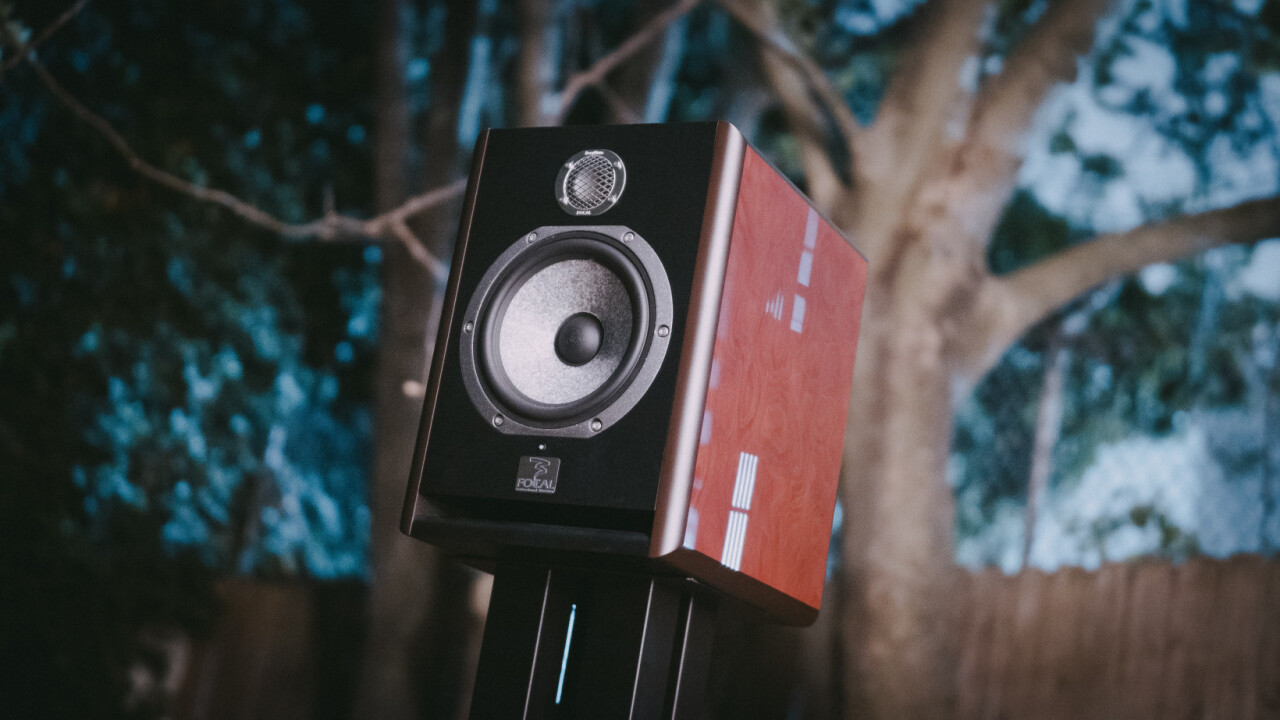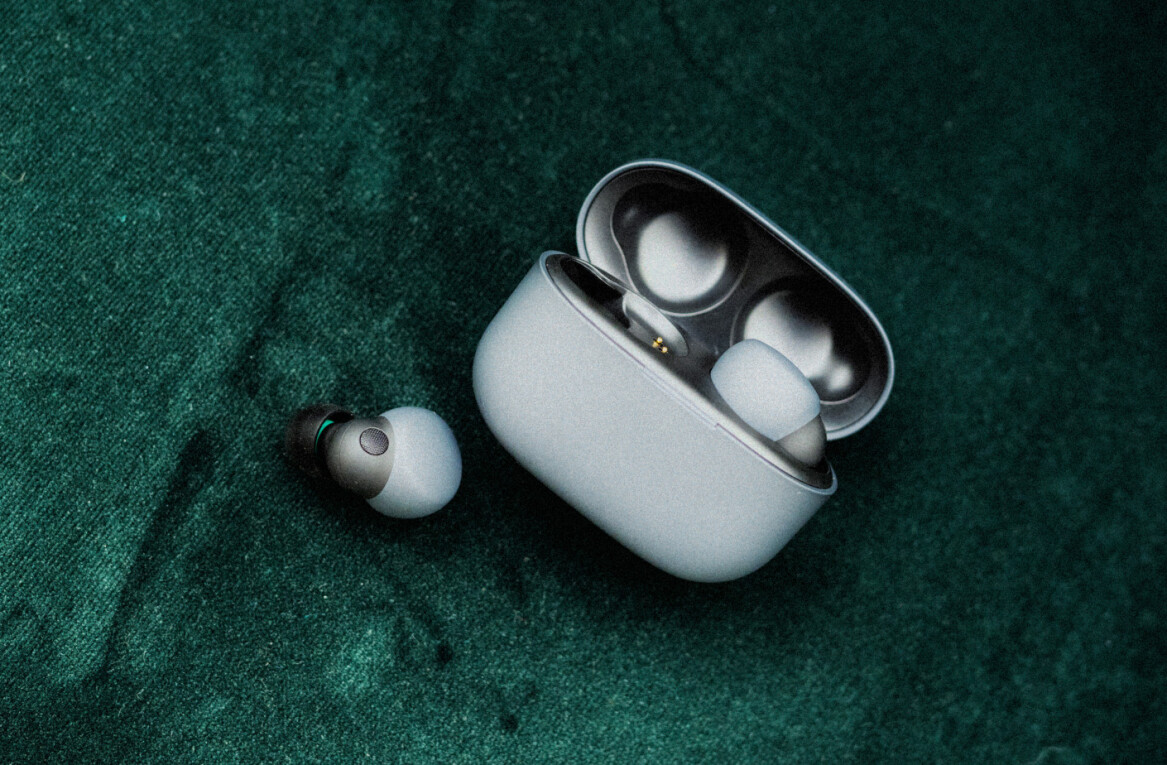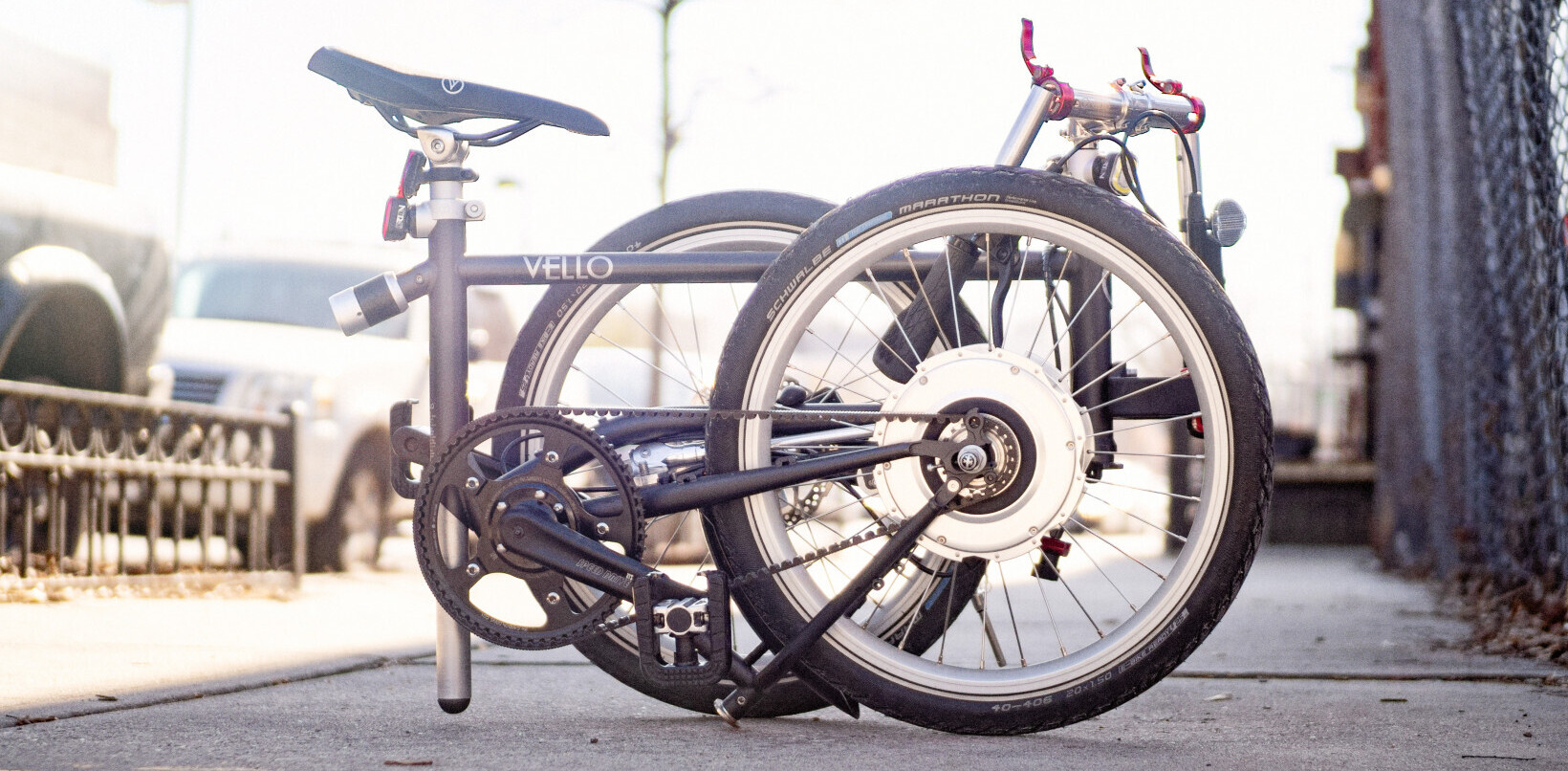
I know people think reviewers should be completely unbiased, but anyone who says they are is kidding themselves. We all have our preferences and prejudices, and as much as we try to keep those in check, they inevitably affect the way we go about a review. Either that bias makes us see a product through rose-colored lenses, or it causes us to overcorrect in the name of objectivity. I can try to be as fair as possible, but my biases are baked into my brain.
All this preamble is to warn you upfront that I’m a huge fan of Focal’s speakers. The company’s Chora 806 speakers have been my living room reference since their launch, and very few speakers have made me want to replace them. That made me curious to see what Focal could do with its professional speaker line — its monitors aimed at studio use.
The Focal Solo6 Be is one of the company’s premium nearfield studio monitors. At $3,000 a pair, they are pricey, but not completely outlandish in the professional or hi-fi world. It’s also actually the cheapest way to get Focal’s most advanced speaker materials. For comparison, you’d have to spend $10,000 to get the same W-sandwich technology and beryllium tweeter on Focal’s Sopra No. 1. Considering the Solo6 comes with amps built-in, they are arguably a decent value by audiophile standards.
So here’s the long story short: the Solo6 Be is a unique studio monitor with a stunning design, a fairly neutral sound, and expansive spatial presentation. It’s a very enjoyable pair of speakers to my ears, but as a nitpicky audiophile who pays a lot of attention to measurements, there are some flaws potential buyers should be aware of.
The design
First things first though. These speakers are pretty:

Most studio monitors look like their aesthetic design was an afterthought, but not the Solo6 Be. These are speakers that would look just as good in a living room as in the studio, what with their dark red wooden sides and fancy tweeter grille. I wish more studio monitors would pay attention to aesthetics like this, as the distinction between studio monitors and home speakers is mostly unnecessary — I frequently recommend studio monitors for home use.
Unlike many modern monitors, Focal does not use DSP with these speakers. They have an internal amplifier, but the speakers don’t have any fancy software to tune and refine the sound. That said, the company does provide a couple of ‘contour’ knobs that allow you to tune the sound to a surprisingly high degree considering the lack of DSP. You can adjust the highs by +/- 3dB and the lows by +/-6dB, and it can dramatically alter tonality.
Your sole input is an XLR port on each speaker, so you’ll likely need some kind of adapter if you’re trying to integrate these into a home setup.
The sound — as heard and measured
I adamantly believe that studio monitors should be paragons of neutrality. In TV and film, there are industry standards that allow you to calibrate your screen to approach the image intended by the work’s creators. That doesn’t quite exist for music; the closest we have is to employ speakers with a flat-ish frequency response and smooth directivity (more on what that means in my guide to speaker measurements). So that’s what I look for in all my speaker reviews, but in particular for my studio monitor reviews.
As such, I won’t be separating my listening impressions and speaker measurements in this review — they go hand-in-hand. That said, keep in mind that I make most of my listening notes before measuring. They just happen largely to agree.
We can get a powerful overview of a speaker’s sound with a graph called a spinorama (AKA the CTA-2034A speaker measurement standard). Creating a ‘spin’ involves eliminating the influence of room reflections and rotating a speaker to capture its sound at 70 angles. Yes, that is a lot of work, but it allows us to get a picture of the speaker’s true sound in a way a typical in-room measurement does not. Though it was designed to evaluate speakers in the context of a living room setup, it also contains most of the information we need to know for studio purposes as well.
Here is the spin for the Solo6 Be:

Spinoramas are thoroughly explained in my measurements guide, but below are the details I want to focus on:
- The green line is the ‘on-axis’ sound — the sound that travels in a line of sight from the speaker to your ear. The ‘listening window’ in white averages a few angles because people often don’t sit perfectly centered in front of speakers. I normally care more about the listening window than the on-axis, but as positioning is more precise in a studio, I’ll give the on-axis a little more credence this time around. Ideally, both would be a flattish line.
- The purple line — the predicted in-room response (PIR) — estimates the collective sound that arrives at your listening position once you factor in reflections. The curve is meant to represent living room listening, but it still tells us a lot about a speaker’s tonal balance even in a studio setup. Ideally, this would be a flattish line that is tilted downwards a few decibels from the direct sound.
- The upper blue line is the ‘early reflections(ER)’ curve, and it’s basically a less comprehensive version of the above. It is an average of the angles that constitute typical early reflections. The PIR is usually very close to the ER curve, so the former is often omitted from these graphs.
- The bottom blue line is the ‘early reflections directivity index.’ This gives us an idea of how similar the reflected sound is expected to be to the direct sound. Ideally, this would be a flattish line with a gentle rise.
- The yellow line is the Horizontal Early Reflections Directivity Index. That mouthful is not a standard part of the spinorama, but I throw it in there as it’s a neat little summary of a speaker’s soundstage performance.
- The red lines aren’t very important for our purposes, and they mainly repeat what the other curves tell us.
- Major bumps that are present in all of the top curves suggest a resonance.
The direct sound
In a typical nearfield studio setup — especially in a treated room — the direct sound will dominate over the reflected sound. So those intending o use these speakers in a nearfield setup will want to weigh the on-axis and listening window a bit more heavily than those who want to use the speakers in a living room.
In this regard, the Solo6 performs quite well. There is a broad scoop from 1 kHz to 3kHz which likely contributes to the laid back mids I heard during my listening, but it’s not a particularly major flaw, and the rest of the midrange is quite balanced (besides, in my experience, scoops in the frequency response tend to be less offensive than wide peaks). I might not have noticed that dip had I not heard the Genelec 8341B (much more expensive) and Polk Reserve R200 (much less expensive) in close succession to the Focals. These speakers are just a little more neutral to my ear.
The Solo6 Be also have solid bass extension, which should provide useful energy into the 40Hz region in-room. That’s good enough for almost all music with acoustic instruments, though you’ll want to supplement with a sub for other genres (really, you should always have a subwoofer). You could, of course, add some extra bass using the included contour knobs. For reference, here’s how the knobs affect the highs and lows (note that I could not capture frequencies below 100 Hz for these measurements):

You have a fair amount of flexibility to tweak the sound to your tastes, which means you should be able to find a tonal balance that worked for you. I liked setting the knobs to -1dB in the highs and +1dB in the bass, as I felt this smoothed of the response a little, but your response may vary. In any case, the speakers should mostly sound good out of the box.
The off-axis sound
Where the speakers’ flaws rear their head is in the overall off-axis performance. The PIR in purple, which combines the horizontal and vertical off-axis data, shows that the mid-range scoop becomes exacerbated, and that there excess energy in the presence region 4-6 kHz. The latter could lead to the speakers occasionally sounding a bit bright with things like brass or cymbals in some rooms and setups.

It’s worth reiterating that in a nearfield setup, you’ll mostly be hearing the direct sound. The closer you listen to the speakers (and the more treatment your room has), the more the sound will approximate the on-axis sound, and the less likely you are to hear the off-axis flaws. The further you are, the more the sound will be approximated by the predicted in-room response. It’s possible Focal didn’t consider smooth directivity a priority given the intended nearfield use.
Still, even in the nearfield, it never hurts to have clean directivity, especially when the competition — and some of Focal’s own speakers, like the aforementioned, much cheaper Chora — perform better in this regard. The Solo6 Be has been around for over 10 years, and though it’s gone through a few subtle revisions, the basic design has gone unchanged. It shows its age in this aspect.
(I wouldn’t be surprised if the new, much cheaper Alpha Evo series — which I hope to get my hands on soon enough — demonstrates better directivity performance. They offer a small but purposeful-looking waveguide, which is a good sign.)
It also makes them somewhat worse choices for the living room than the studio. While something like the Genelec 8341B sounds just as good no matter where you listen to it, with the Focals, I think you’re better off buying one of their speakers intended for the living room.
All that being said, while the off-axis sound messes up tonality a bit, the Solo 6 Be still put up a strong soundstage performance — and perhaps more importantly, a unique one.
Many of the best studio monitors use large, deep waveguide which help smooth out a speaker’s off-axis response and improve soundstage accuracy, but they have the consequence of narrowing the soundstage too. Not so with the Solo6 Be, which create a significantly wider image than you’ll get from the vast majority of speakers. They also have a remarkably wide horizontal sweetspot; the image doesn’t immediately snap to one speaker if you move you head a little.
Focal’s inverted dome tweeters are known for created these spatial qualities. We can see this clearly if we isolate just the speaker’s horizontal response. Here’s how the speaker measured in 10-degree increments out to 90 degrees horizontal:

In the above graph, we can see that the off-axis curves largely follow the shape of the on-axis one; this is the hallmark of a good soundstage, as it tells us that the horizontally reflected sound will be similar in character to the direct sound.
When compared to other speakers, these curves are also packed more closely together — that essentially tells us that the reflections will be louder, which contributes greatly to the sense of a wider soundstage. You can also see that the sound barely changes even 20 degrees off-axis, helping maintain that stable soundstage.
Another way to look at horizontal performance is to take a few averages of the predicted early reflections off your side, front, and rear walls, as well as the total horizontal reflections:

It’s much the same story. The Horizontal ERDI (yellow) is repeated in this graph, and it’s not quite as smooth as I’d like, but the speaker still provides a wide soundstage with a pretty good sense of accuracy.
The difference between a more expansive soundstage and a narrower, more precise one is really a matter of taste, but I have a strong preference for the former. It’s no surprise I enjoyed the Solo6 Be’s soundstage more than most monitors I’ve tested (indeed, it’s one of my reasons for being a Focal fan in general). While I’d still like to see even better horizontal directivity, the Solo6 Be is at least going to sound ‘different.’ and it spatial presentation may just work better with your particular room.
Next, a quick look at the speaker’s vertical measurements (using the tweeter as the reference height). Very few speakers have perfectly controlled vertical directivity, but the Solo6 Be seems to make little attempt to keep them under control. This can make a speaker a little more variable from setup to setup in my experience, although the vertical measurements affect soundstage far less than the horizontal ones.
Here’s the response above the tweeter axis:

And below:

It can be difficult to make sense of all these lines, so here are the estimated ceiling and floor reflections in a living room setup (the angles would be different in a studio setup, of course):

You can see how the vertical response contributes to the slight coloration of the speaker by creating a dip in the 2kHz region but emphasizing the presence region.
On the plus side, the Solo 6 Be isn’t too sensitive to small changes in vertical angles at the listening position. It’s particularly stable above the tweeter axis, barely showing a change 10 degrees above the tweeter, so you can stand up from your desk chair without your sound quality going down the gutter.

What’s not in the measurements
I firmly believe most if not all aspects of sound quality can be explained in measurements — sound is a physical phenomenon, not magic — but that doesn’t mean I’m able to provide or interpret all the data that could possibly matter. Though frequency response and directivity are the dominating factors of sound quality, here are some impressions the measurements above don’t quite capture:
- The Solo 6 Be can play extremely loud — louder than I can think anyone would possibly want to listen in a nearfield setup, and loud enough for most living room use too. For a relatively quiet listener like me, there’s way more than enough power on tap here.
- This fact also is likely to contribute to the Solo 6 Be’s excellent sense of dynamics. It kind of reminds me a bit of a horn speaker in this regard without being a horn speaker.
- The speakers have no audible hiss.
- There’s no chuffing from the port.
- There’s no distortion that I could hear (I tend to believe distortion measurements aren’t that useful, as it’s very difficult to quantify how much distortion is audible).
- I measured the latest revision of the Solo6 Be, but there are at least two older versions of the speaker. Other measurements available suggest directivity hasn’t changed much, but there may have been subtle changes to tonality over the years.
- Did I mention the speakers are pretty? I’m not gonna lie, I think a speaker sounds better when it looks nice, much like red cars are faster.
Not perfect, but still very enjoyable

The Focal Solo6 Be is a gorgeous monitor that would look just as good in most living rooms as it does in a studio, and it delivers an expansive soundstage that is unlike almost all of the competition. It plays loud with no audible distortion, it’s free of hiss, and it has excellent dynamics. Focal makes some fantastic drivers, and it shows here.
On the other hand, the speaker is shy of the pristine neutrality I would personally want from a studio monitor, and these flaws might actually be more noticeable should you decide to take the speaker out of the studio and into the living room. Tonality is not as balanced as some of the competition — or even some of Focal’s other speakers — and I’d like to see more refinement in the directivity department for this price.
Still, those flaws didn’t stop me from rocking out to the Solo6 Be. If you’re looking for a studio monitor with a wide soundstage, or even just want a pair of active speakers to watch TV with, the Solo6 Be are worth your consideration.
Get the TNW newsletter
Get the most important tech news in your inbox each week.




